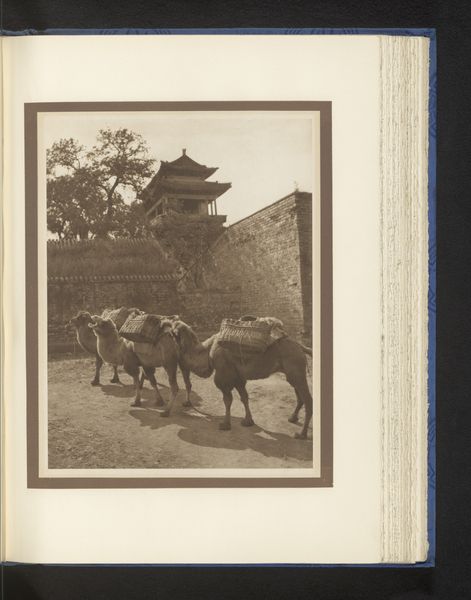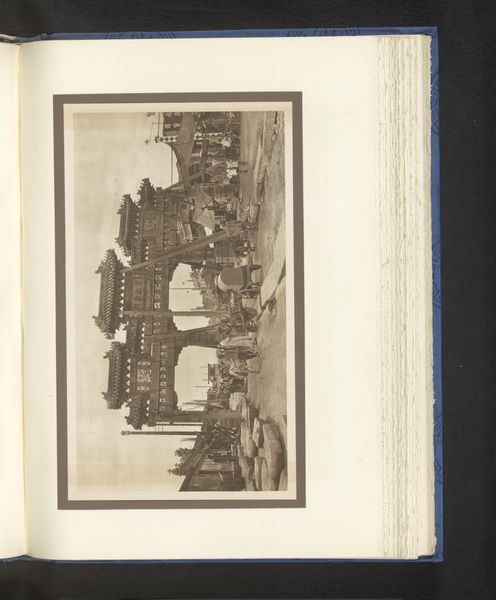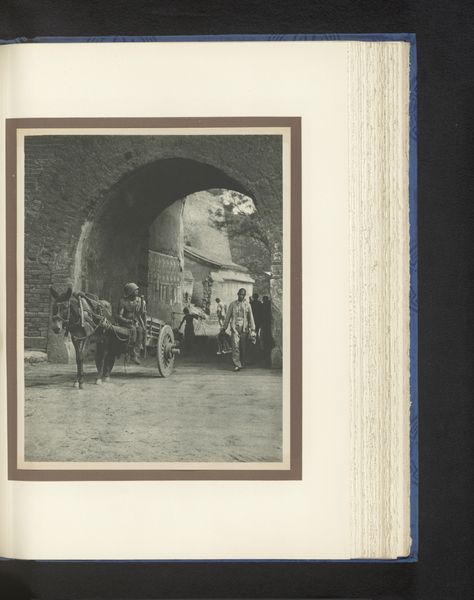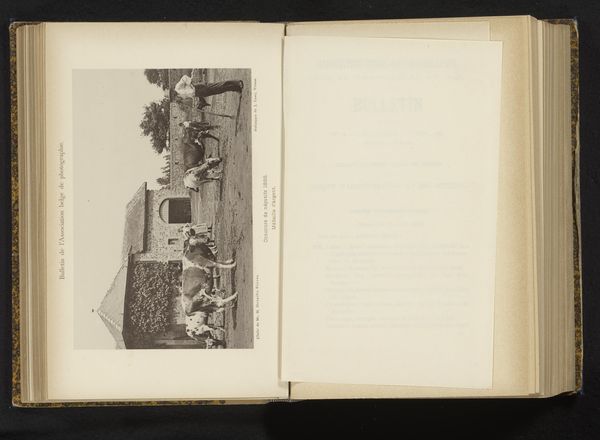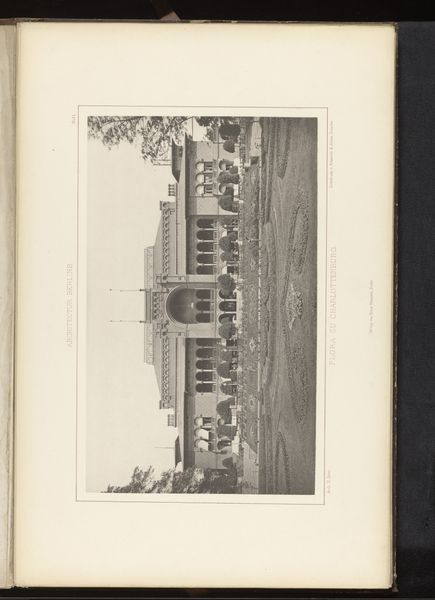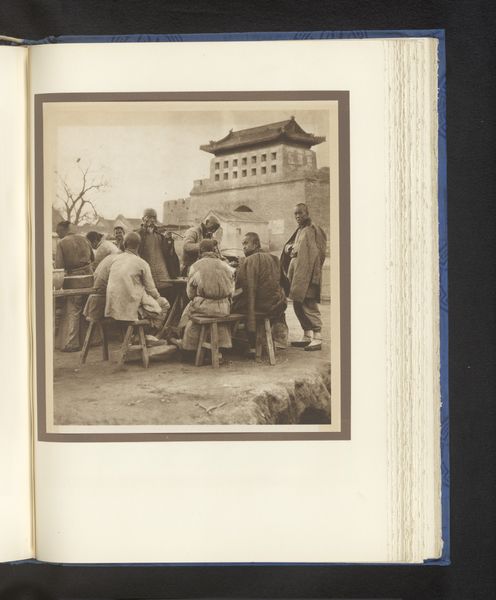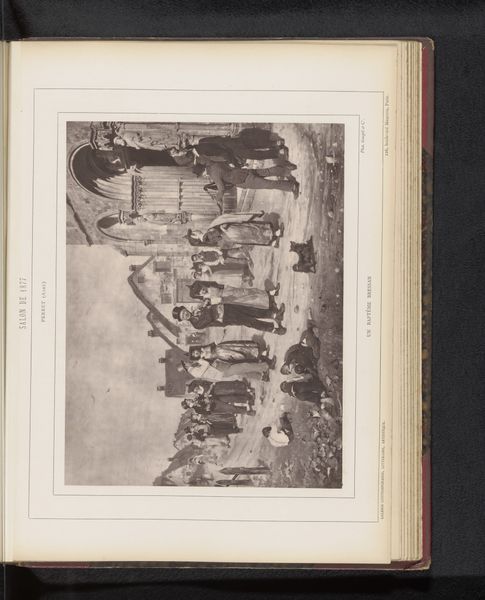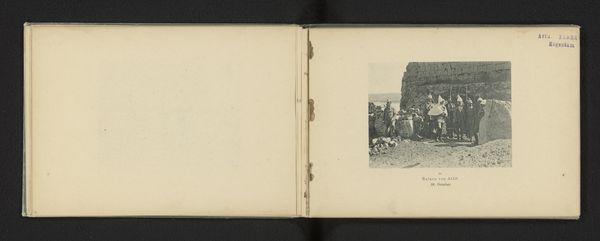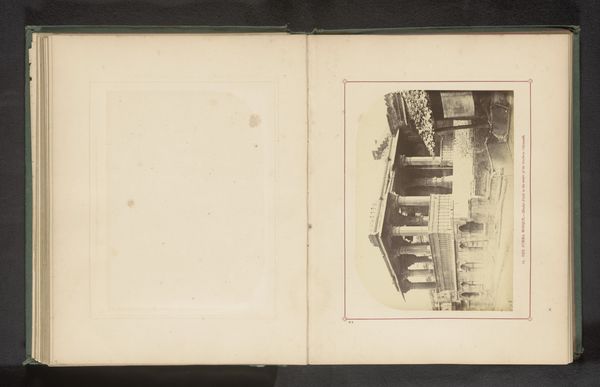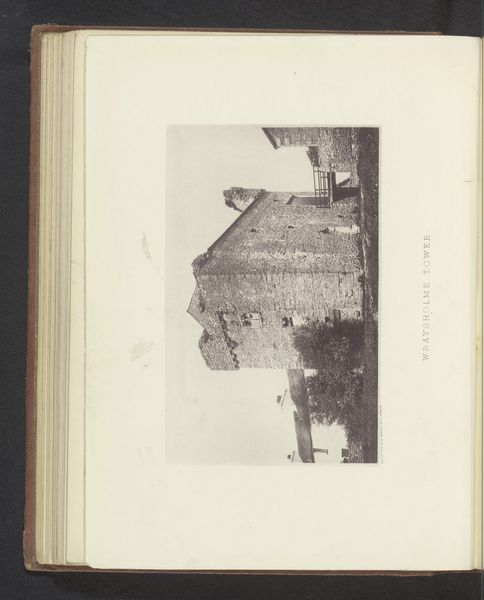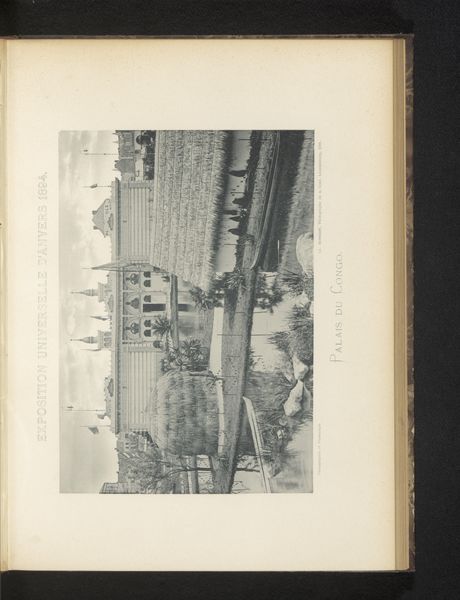
photography, gelatin-silver-print
#
asian-art
#
landscape
#
photography
#
road
#
orientalism
#
gelatin-silver-print
Dimensions: height 204 mm, width 224 mm
Copyright: Rijks Museum: Open Domain
Curator: Here we have Donald Mennie's "Camels on a Path Beside a Building," a gelatin-silver print dating from before 1920. Editor: It’s remarkably evocative, like a still from an old adventure film. The camels, weighed down with cargo, moving past that formidable structure, almost seems to vibrate with atmosphere, a blend of resilience and quiet endurance, what do you make of the tonality? Curator: I see what you mean about its atmospheric quality; the tones do lend a sepia-toned veil of antiquity to the scene. But Mennie's work wasn't simply pictorial. It reflected the burgeoning Western fascination with the East and was part of what we call the Orientalist movement. He was living and working in China during this period and documented much more than picturesque landscapes; he captured the political and economic realities, which were very complex at the time. Editor: So, it's about more than just pretty pictures, then? This single file procession seems pregnant with a message. Those camels aren't just wandering around—they are conduits for larger social mechanisms. I feel the grit, the labor—that's how history touches you sometimes, not with grand gestures but small moments. Curator: Exactly. Look at the building in the background: it dominates the frame, implying structures of power. But Mennie’s personal biography gives an alternative reading to the picture, with the man seemingly directing these beautiful animals, perhaps revealing aspects of the colonial gaze? His works are complicated intersections. Editor: Right. It's a scene observed through a particular lens. It is striking how that lens allows me, over a century later, to both gaze and ponder this slice of time. But can we ever be entirely free of that lens when interpreting such images, no matter how honest our efforts are to consider all social, cultural, and political issues? Curator: Probably not entirely. But I think by acknowledging its existence, we at least have a clearer view of its distortions and, perhaps, a more nuanced interpretation of its content. Editor: Agreed. It certainly adds layers to a simple photograph.
Comments
No comments
Be the first to comment and join the conversation on the ultimate creative platform.
